Fields of Gold: 21 Different Types Of Coreopsises
If you’ve ever spent time in the eastern United States of America, then you’re likely to have come across the Coreopsis, although you might not know it by that name. More commonly referred to as tickseed, the Coreopsis is known for bright yellow flowers and a tendency to grow in difficult conditions.Coreopsis, or tickseed, is a cheerful plant, and a gift of it is seen as a wish of goodwill and happiness.It’s also the state wildflower of Florida, where it can be found in moist areas and growing on the roadside.Although it’s most common in the United States, tickseed can be found as far north as Canada and as far south as Mexico. The ability to attract pollinators has also led to popularity in Asia.There are many types of coreopsises, so we’ve put together this guide to our favorites.
21 Types Of Coreopsis
1. Bigelow Coreopsis, Coreopsis Bigelovii
Bigelow Coreopsis is a member of the Asteraceae family that’s endemic to California. It’s an annual herb that produces large stemlike inflorescences that can reach up to 12 inches tall and often bear a single yellow flower head.
Bigelow Coreopsis was eaten by the native Kawaiisu and Tubatulabal peoples and could be enjoyed raw or cooked.
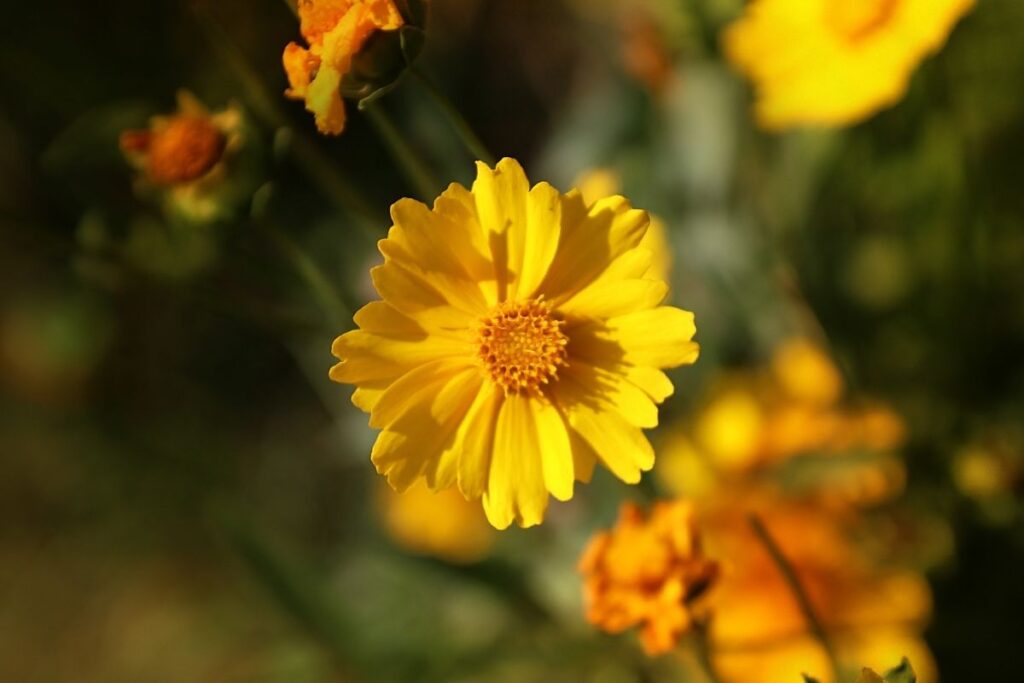
2. Broadleaf Tickseed, Coreopsis Latifolia
Native to the Blue Ridge Mountains, the Broadleaf Tickseed grows in moist forests with hardwoods and mafic rocks.
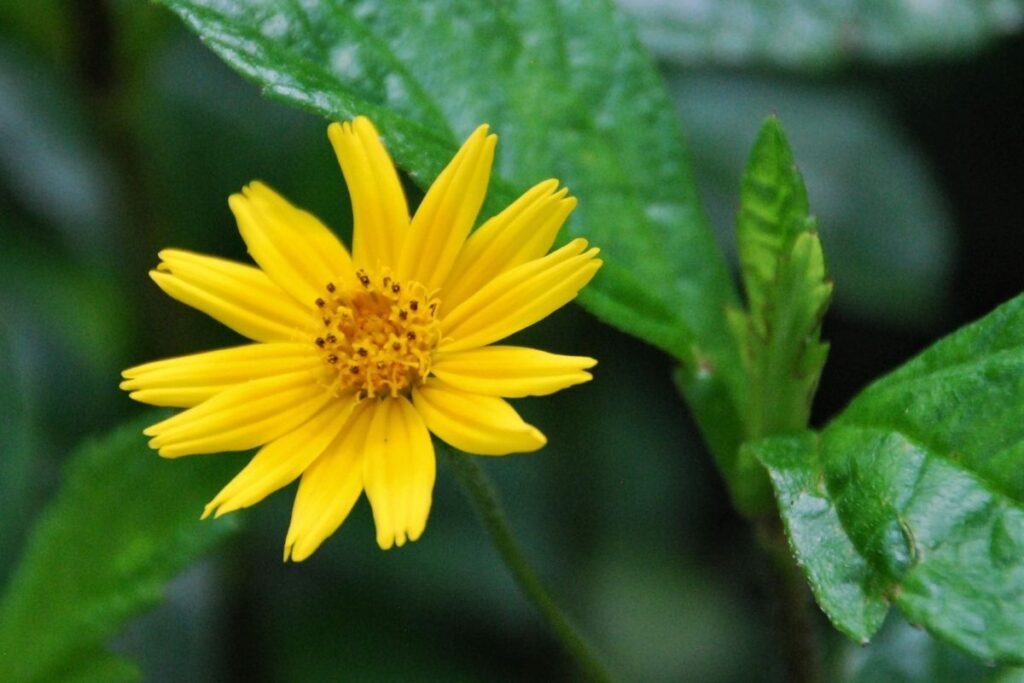
It’s thought to have once had a much more prolific range but is now rarely found even in its home of North California. It has yellow flowers and large leaves that can be almost 8 inches long and 4 inches wide.
3. California Tickseed, Coreopsis Californica
The yellow flowers of the California Tickseed are seen blooming across the dry habitats of California from March to May. It prefers to grow at elevation and can be found at heights between 90 feet and 2000 feet.
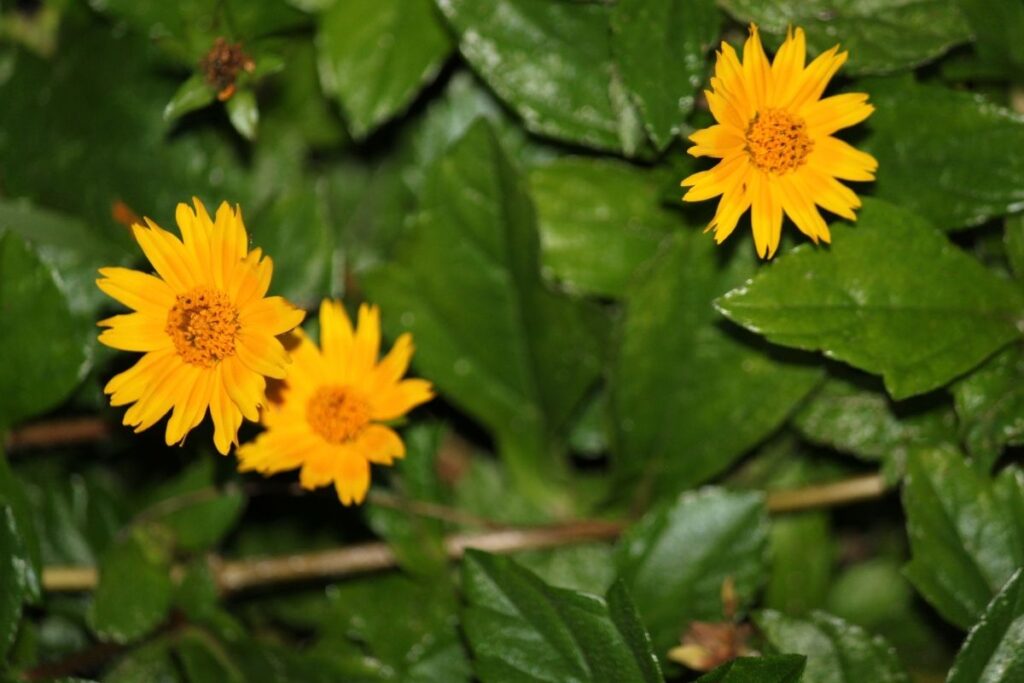
4. Florida Tickseed, Coreopsis Floridana
The Florida Tickseed is one of several Coreopsis varieties native to the state of Florida. It can typically be found in wetlands, swamps, and bogs, where it’s often overshadowed by larger and showier sunflowers.
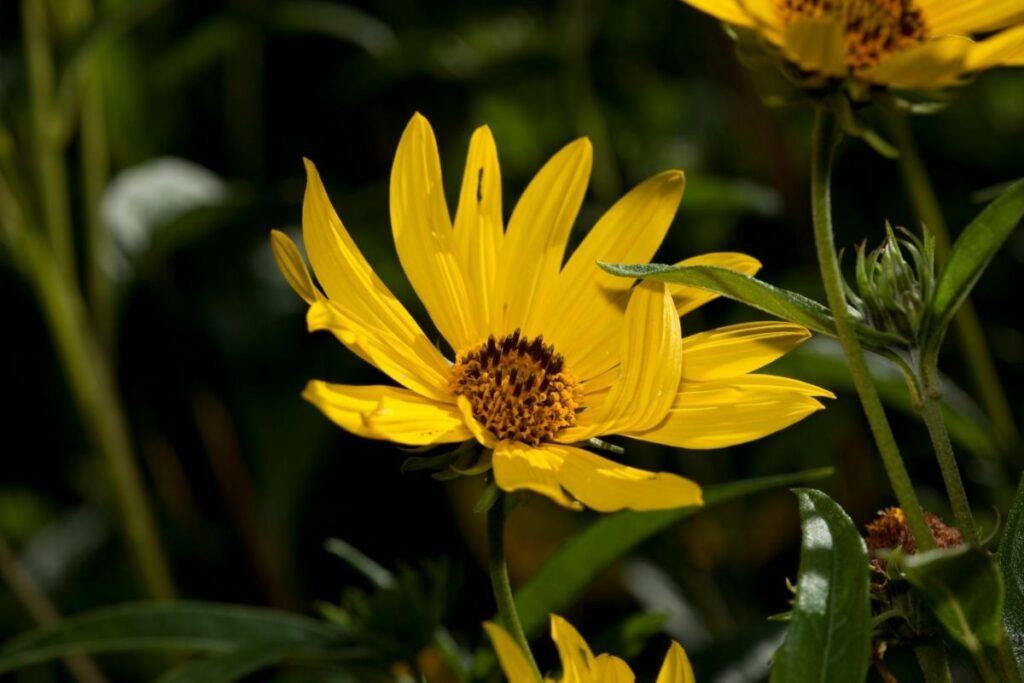
Florida Tickseed is known for attracting pollinators. Coreopsis is actually the wildflower of Florida, thanks to its prevalence in the state.
5. Georgia Tickseed, Coreopsis Nudata
Found in the ditches and swamps of the southeastern states of North America, the Georgia Tickseed is one of the rare Coreopsis flowers to bloom in colors other than yellow.

Instead, the flower heads of the Georgia Tickseed are pink and purple.
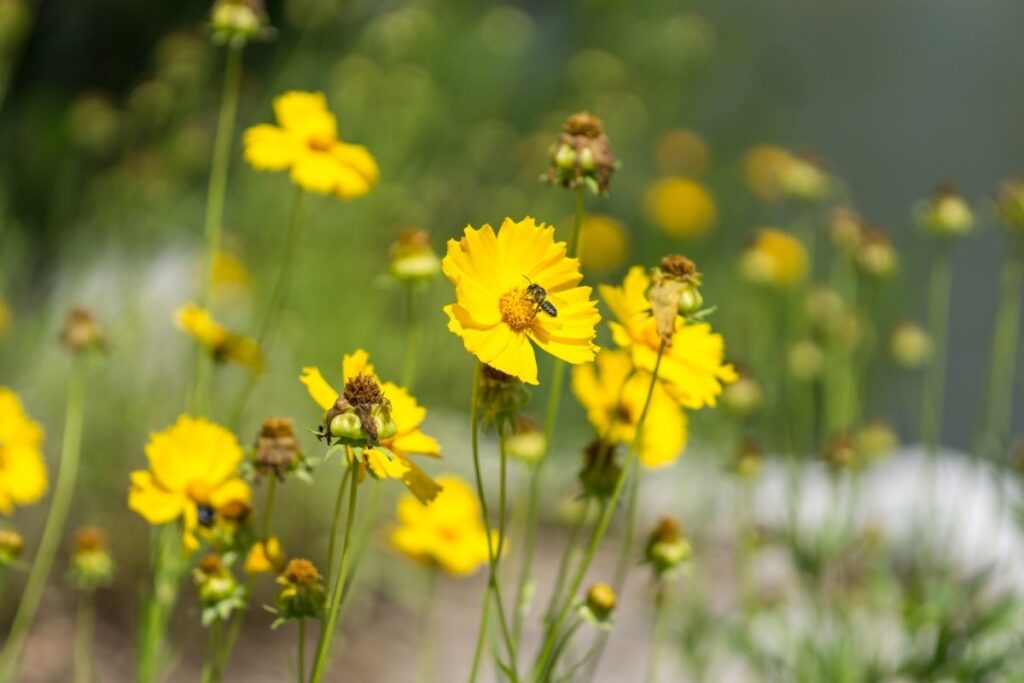
6. Giant Coreopsis, Coreopsis Gigantea
It’s no surprise to learn that the Giant Coreopsis is one of the largest members of the Coreopsis group. The stem can grow up to 1 meter tall, with a diameter of around 4 inches, making it a trunk that stores water in dry weather.
The bright leaves and flowers decorate the top of the trunk, with the golden flowers reaching almost 8 inches in diameter. During the dry season, the branches and trunk turn bare.
7. Golden-Mane Coreopsis, Coreopsis Basalis
The bushy Golden-Mane Coreopsis has colorful and showy flower heads, which give the plant its name.

The golden flowers are tinged with red at the meeting point of each ray floret, providing the mane-like appearance that defines the plant. Golden-Mane Coreopsis grows best in open areas and sandy soils and is often used for landscaping.
8. Lance-Leaved Coreopsis, Coreopsis Lanceolata
Lance-Leaved Coreopsis is a perennial plant that’s native to the eastern areas of the United States but is now found in many parts of the globe.
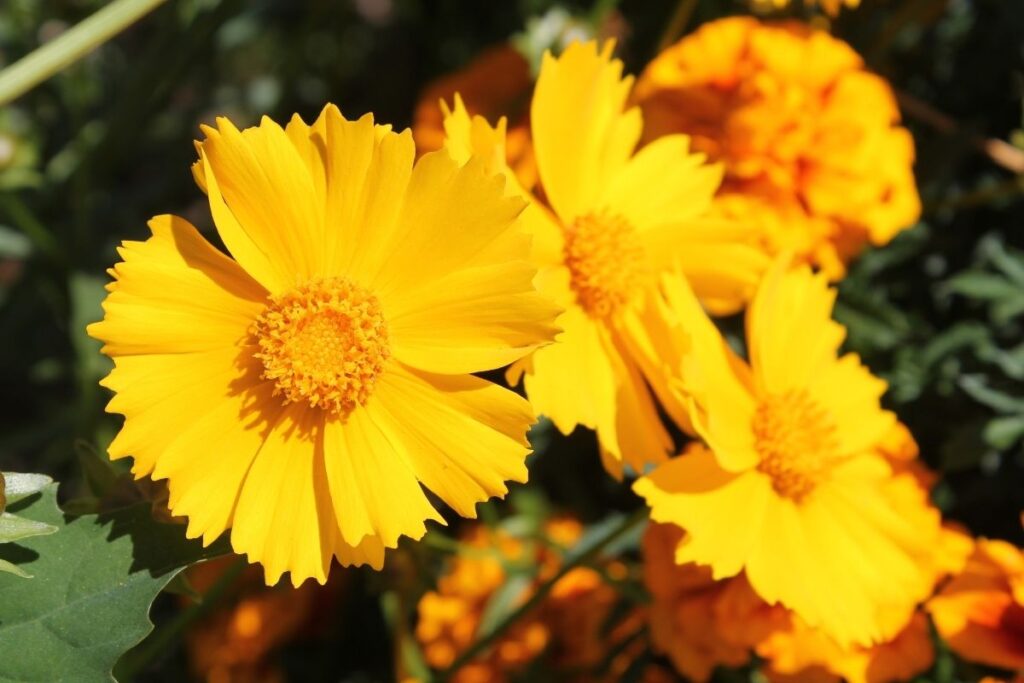
An invasive species in Japan and China, it was often planted for the pollinator properties provided by the seeds and nectar. Planting the easy-to-maintain Lance-Leaved Coreopsis can attract bees and butterflies to your yard.
9. Large-Flowered Tickseed, Coreopsis Grandiflora
Native to both Canada and the United States, the Large-Flowered Tickseed is typically planted to attract butterflies and bees. It’s also cultivated widely in China, where it has become naturalized.
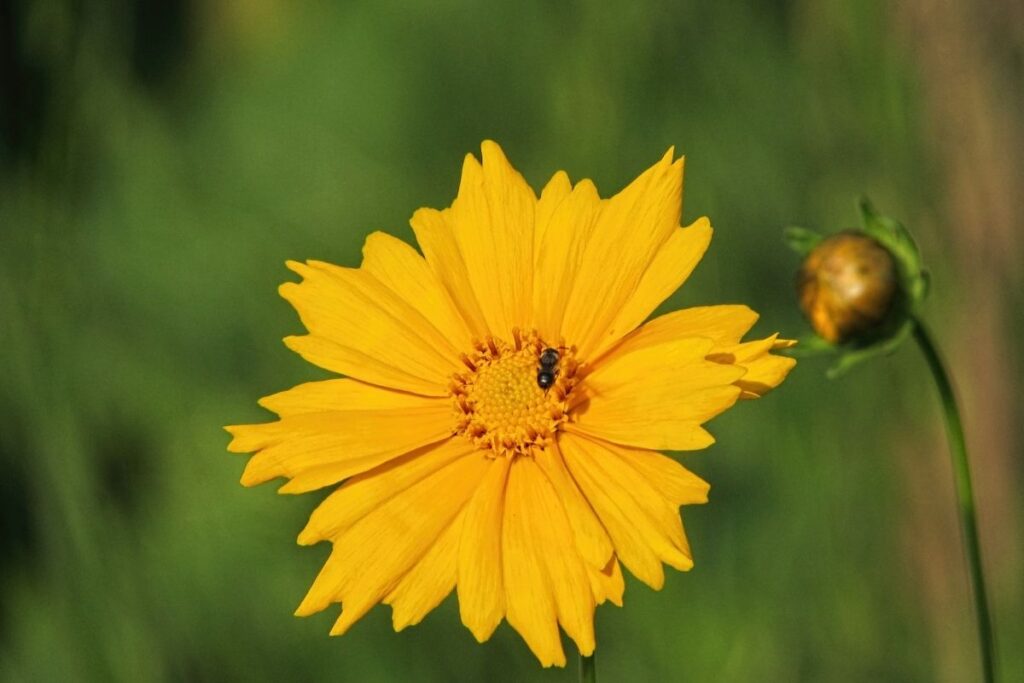
The large flowers are yellow, and many cultivars have been grown to emphasize the delicate ruffles of this perennial herb.
10. Leafstem Tickseed, Coreopsis Calliopsidea
Around the base of the stem of the Leafstem Tickseed are fleshy leaves that divide into slender lobes. A single flower head will produce numerous tiny disc florets, with bright yellow ray florets that can reach up to 1.4 inches long.
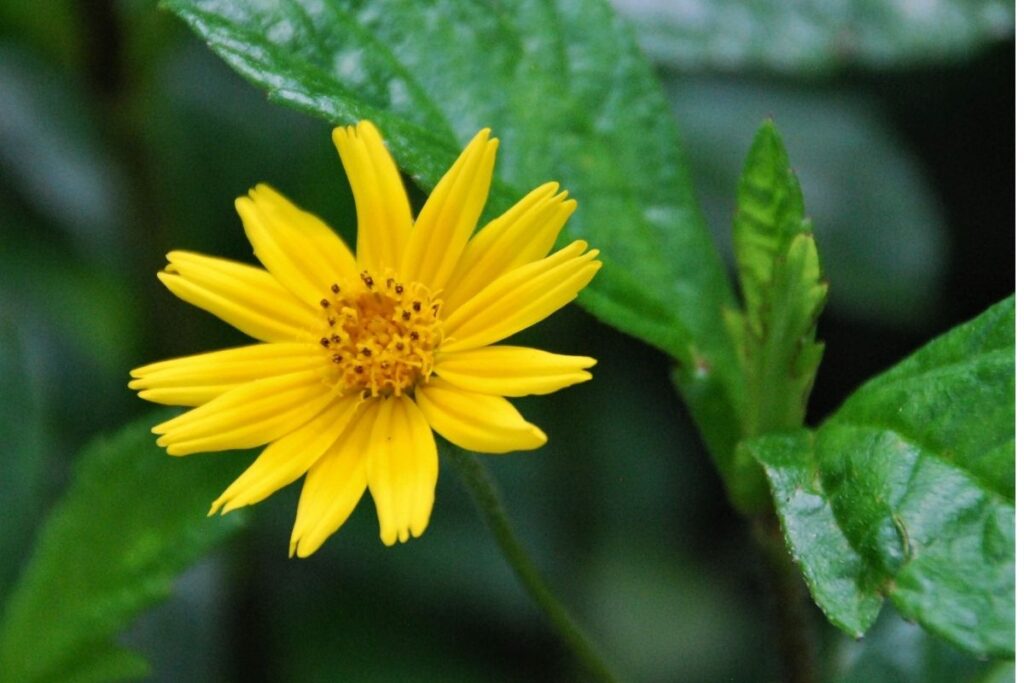
The Leafstem Tickseed is endemic to California and likes to grow among the mountain ranges.
11. Lobed Tickseed, Coreopsis Auriculata
Sometimes known as the Mouse-ear tickseed, the Lobed Tickseed is notable for the lobed flower heads that are popular in gardens.
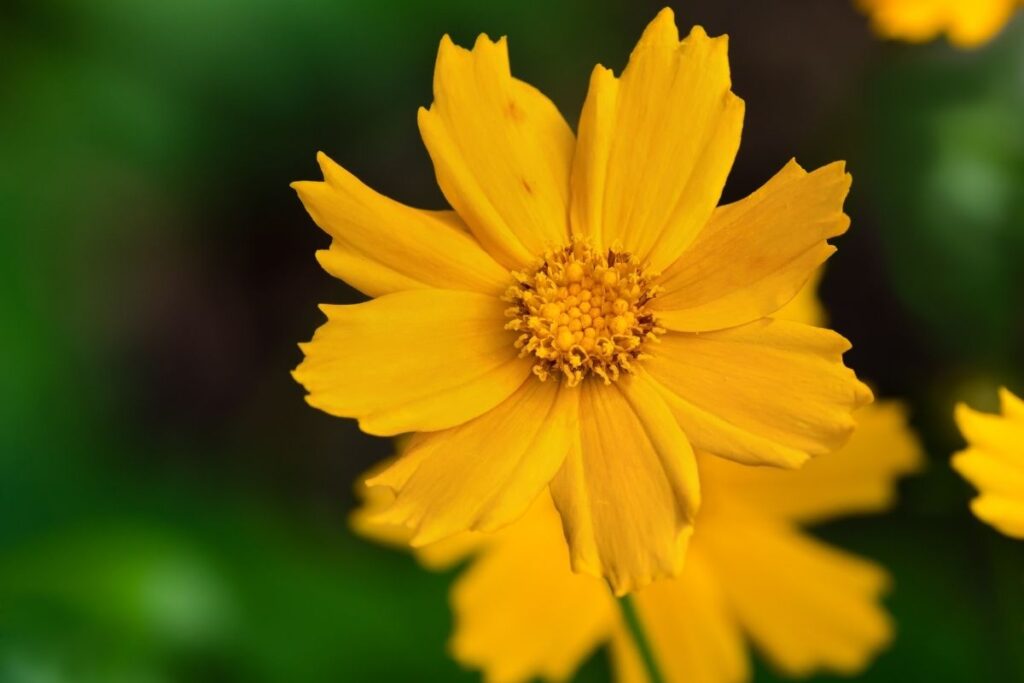
These flowers will bloom from April to June and can be seen along the roadside and in open areas of woodland. The bright colors of this pretty plant have been used as a dye in the past.
12. Love-At-First-Sight, Coreopsis Arkansa
A gift of Coreopsis Arkansa is a way of expressing affection, and in the language of flowers is said to symbolize “love at first sight.” It’s easy to see why these attractive flowers with a deep red center and a golden outer band were associated with messages from the heart.
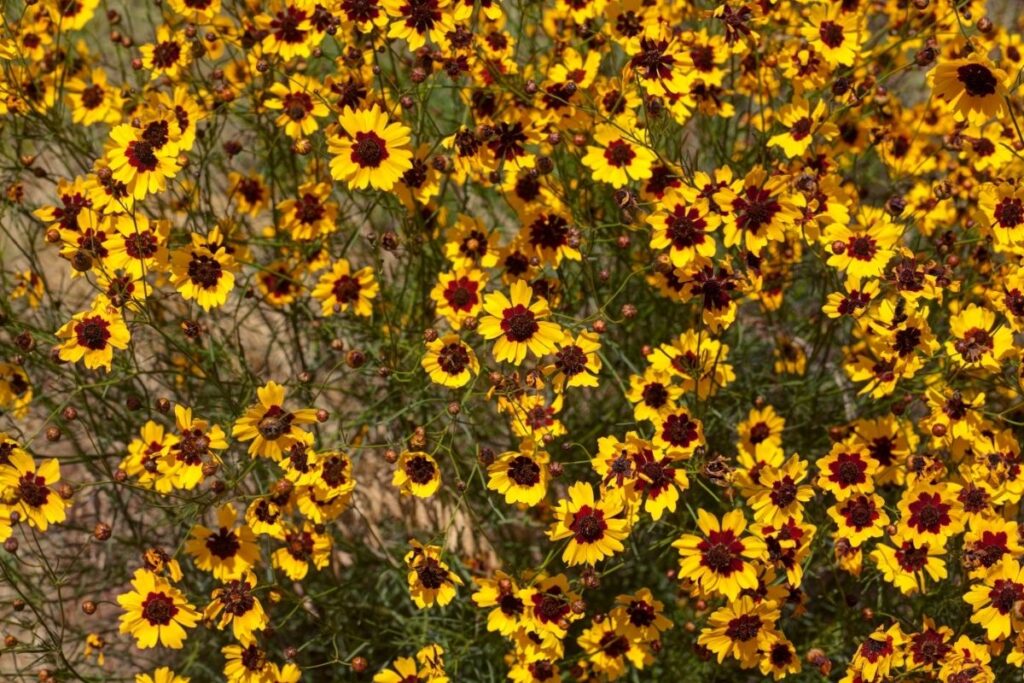
13. Mount Hamilton Coreopsis, Coreopsis Hamiltonii
The Mount Hamilton Coreopsis is unusual among the Coreopsis plants for its small range. It can only be found on its namesake – Mount Hamilton – and the Diablo Range in San Francisco.

It’s low growing, with the foliage rarely reaching a height greater than 8 inches. Yellow-colored flowers can be spotted blooming from March to May, but only at 2000 to 4300 feet above sea level.
14. Pink Tickseed, Coreopsis Rosea
Pink Tickseed is an unusual member of the Coreopsis family. While most members bloom yellow, the flowers of Coreopsis Rosea are pink or white. The disc florets of the Pink Tickseed are typically bright yellow, but the ray florets are a delicate pink. Pink Tickseed likes to grow in marshy areas and damp ground,
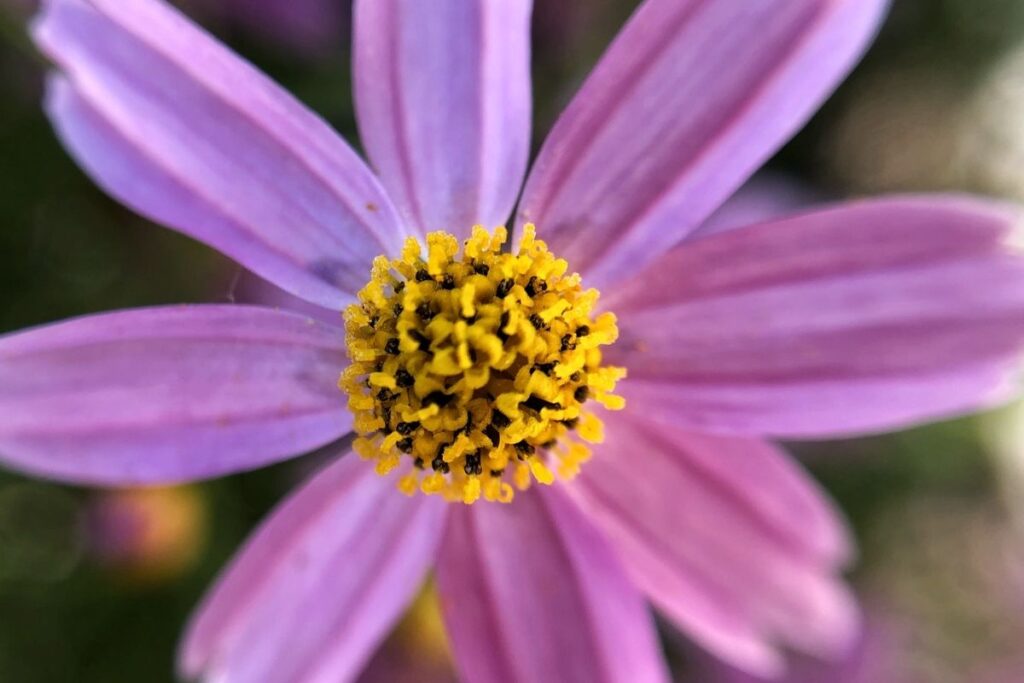
15. Plains Coreopsis, Coreopsis Tinctoria
A widespread Coreopsis that can be found from Mexico to Canada, the Plains Coreopsis is sometimes known as “Calliopsis.” It’s also found in China, where it has become naturalized.
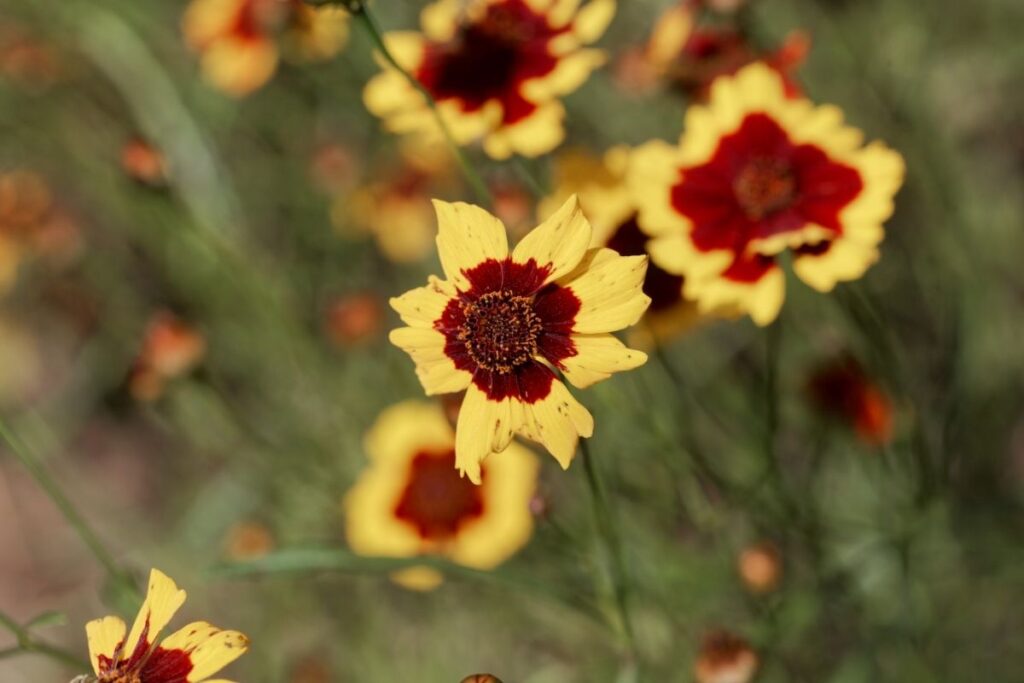
The name “Tinctoria” comes from the dark red dots found at the base of each ray floret, which was once frequently used to make a dye for yarn. It was utilized by the Zuni people, who brewed a hot drink from the flower. And when women wanted a female child, they would drink a tincture made with the entire plant.
16. Sea Dahlia, Coreopsis Maritima
The Sea Dahlia grows around the coast and can be found on the ocean bluffs of San Diego and northern Baja. The lobed flowers can be seen coming into bloom as early as late winter and keep blooming until the early days of summer.

A perennial, it normally grows to around 4 inches tall, but some Sea Dahlias have been found with up to 32 inches of height.
17. Star Tickseed, Coreopsis Pubscens
The perennial Star Tickseed is capable of growing in a variety of different habitats, including granite outcrops and woodland.
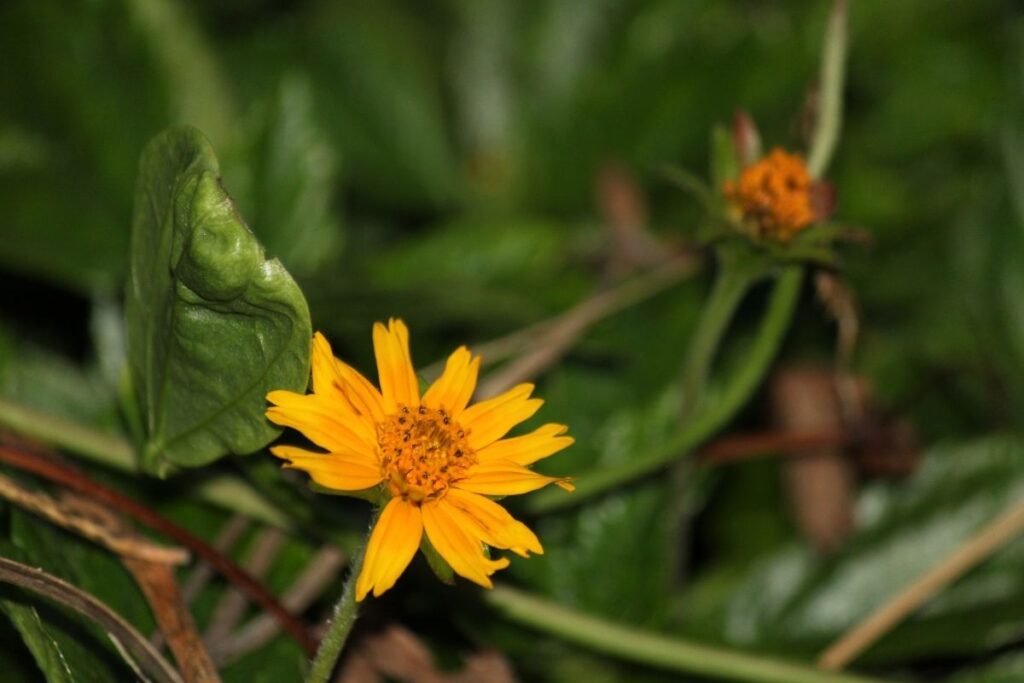
They can also be spotted on roadsides, particularly as they grow up to 3 feet tall with distinctive yellow lobed flowers.
18. Stiff Tickseed, Coreopsis Palmata
There are quite a few different names for the Stiff Tickseed, a variety of Coreopsis that’s native to North America. You might have heard it referred to as Wedgeleaf Coreopsis, Prairie Coreopsis, or even Finger Coreopsis.

It typically has a paler yellow color than the vivid golds of other Coreopsis, and the herbage turns red as it ages. Stiff Tickseed prefers to grow in prairies, rocky areas, and disturbed land.
19. Tall Tickseed, Coreopsis Tripteris
Across the eastern and central areas of North America, the Tall Tickseed grows in the wet banks of streams and moist meadows. It typically grows to a height of 40 inches, but some exceptionally tall varieties of this already tall plant can grow to almost 80 inches.
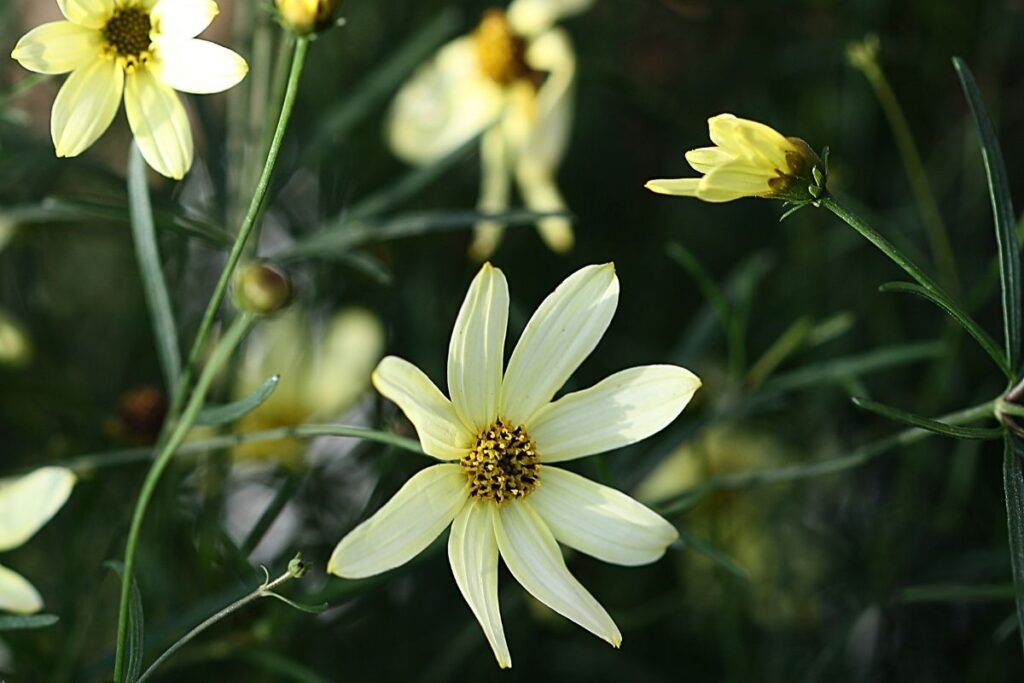
Despite the height, the Tall Tickseed only produces small flowers, with florets less than an inch long.
20. Whorled Tickseed, Coreopsis Verticillata
The Whorled Tickseed is widely cultivated thanks to the ease with which it can be grown. They flower for a long season from midsummer through to fall and rarely suffer from disease or pests.
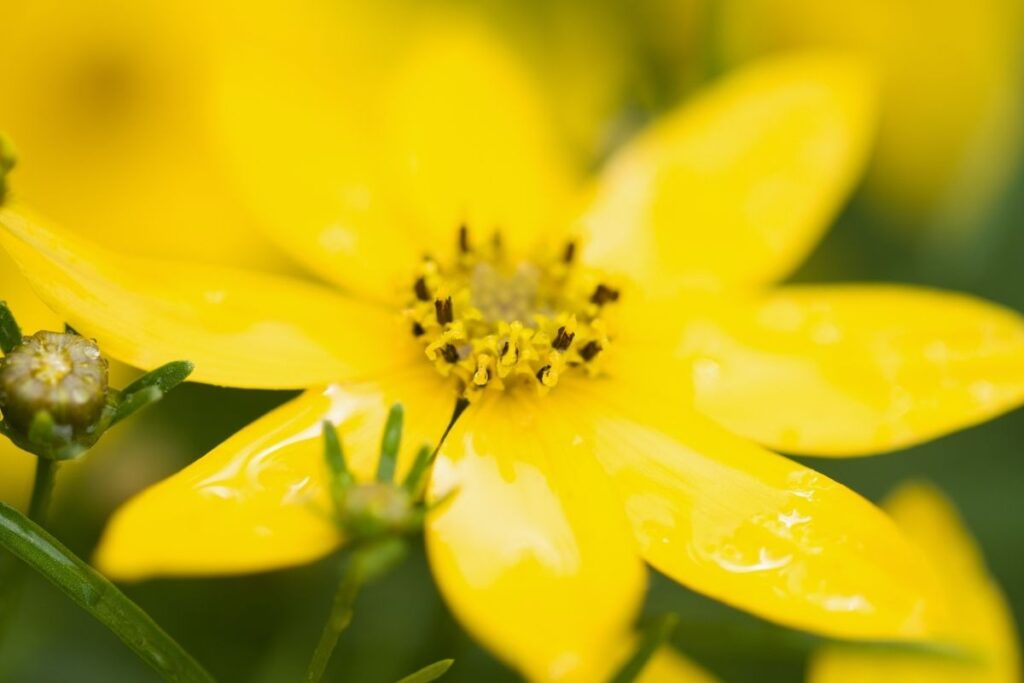
The Whorled Tickseed can also be used to attract butterflies while keeping away deer who might nibble at your flowerbeds. They can also tolerate drought while still producing the vivid flowers that have earned the nickname “pot-of-gold.”
21. Woodland Tickseed, Coreopsis Pulchra
The Woodland Tickseed, a variety of Coreopsis so attractive it has earned the nickname “Beautiful Tickseed”, is actually at risk in its native home of the Southeastern United States.
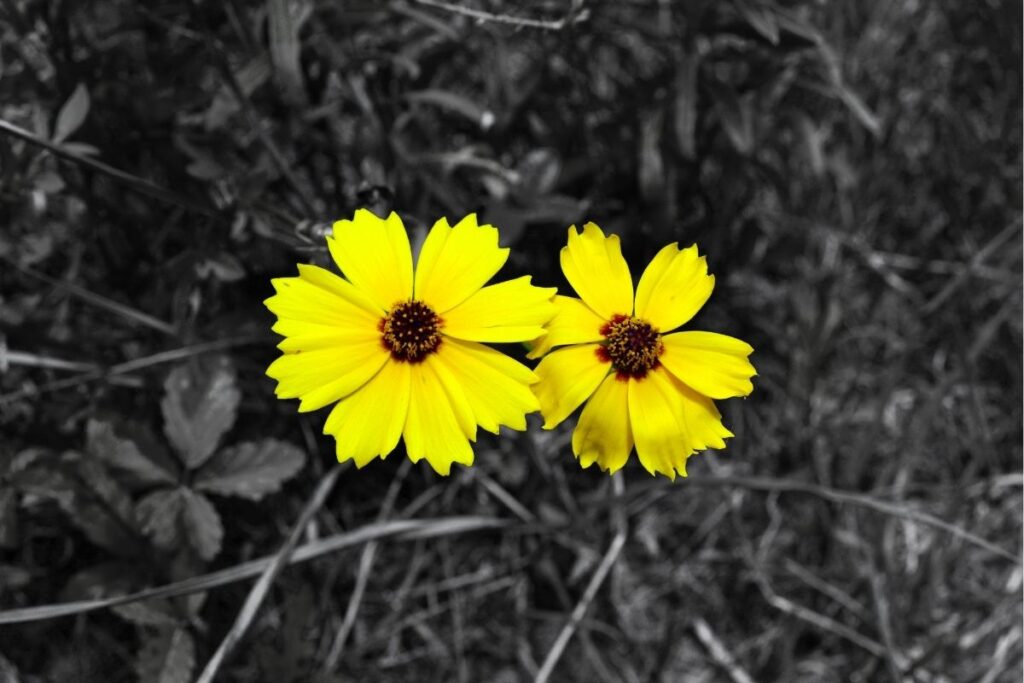
It has a very narrow habitat and can only be found in the Cumberland Plateau of Alabama, although it may once have grown in Georgia.
Final Thoughts
These are just a few types of the wonderful Coreopsis plant. There are many more, most often found in the southeastern United States. But thanks to their showy flowers and skill at attracting pollinators, the easy to care for Coreopsis has become popular all over the world.





